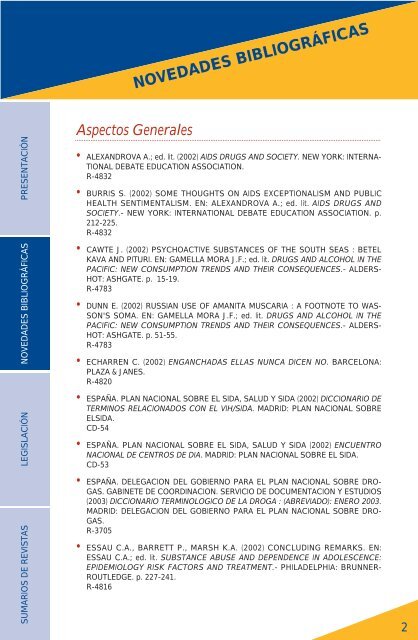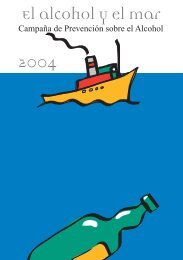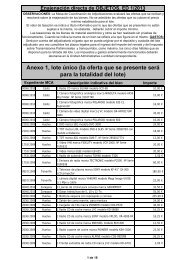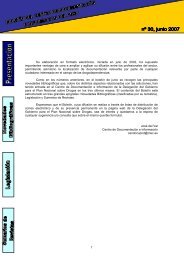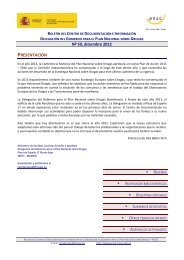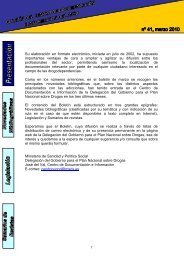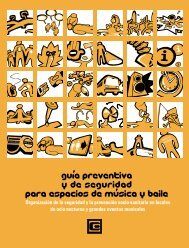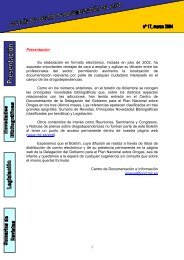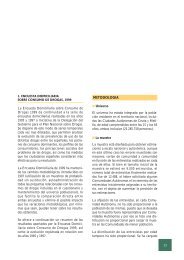Nº 13. Marzo - Plan Nacional sobre drogas
Nº 13. Marzo - Plan Nacional sobre drogas
Nº 13. Marzo - Plan Nacional sobre drogas
Create successful ePaper yourself
Turn your PDF publications into a flip-book with our unique Google optimized e-Paper software.
The maximum clique problem is a problem of combinatory optimization that isclassified within the NP-Hard problems which are difficult to solve. Due to theircomplexity the exact conventional techniques (exhaustive) take long time to provide asolution, therefore it is necessary to develop heuristic algorithms they solve that itreaching a solution near the optimal in a reasonable time. This problem has realapplications eg: Codes Theory, Errors Diagnosis, Computer Vision, ClusteringAnalysis, Information Retrieval, Learning Automatic, Data Mining, among others.Therefore it is important to use new heuristic and/or meta-heuristics techniques to tryto solve this problem, which obtain better results in a polinomial time.They have been used different heuristic to try to solve this problem, eg: Local Search,Genetic Algorithms, Taboo Search and Ant Colony Optimization Algorithms (ACO)[7]. The Ant Colony Optimization Algorithms are a bio-inspired meta-heuristic basedon the behavior of the natural ants, in as they establish the most suitable way betweenthe anthill and a food source [2], these have a great variety of applications betweenwhich is the Data Mining.2 Description of the Clique ProblemGiven to a graph nondirected any G= (V, E), in which V= {1.2,…, n} is the set of thevertices of the graph and E is the set of edges. Clique is a set C of vertices where allpair of vertices of C is connected with an edge in G, that is to say C is a completesubgraph. Clique is partial if this form leaves from another clique, of another formthis is maximal. The goal of the algorithm is to find all the maximal cliques. Anexample of clique can be observed graphically in fig 1.Fig. 1. Example of cliques contained in a graph.


